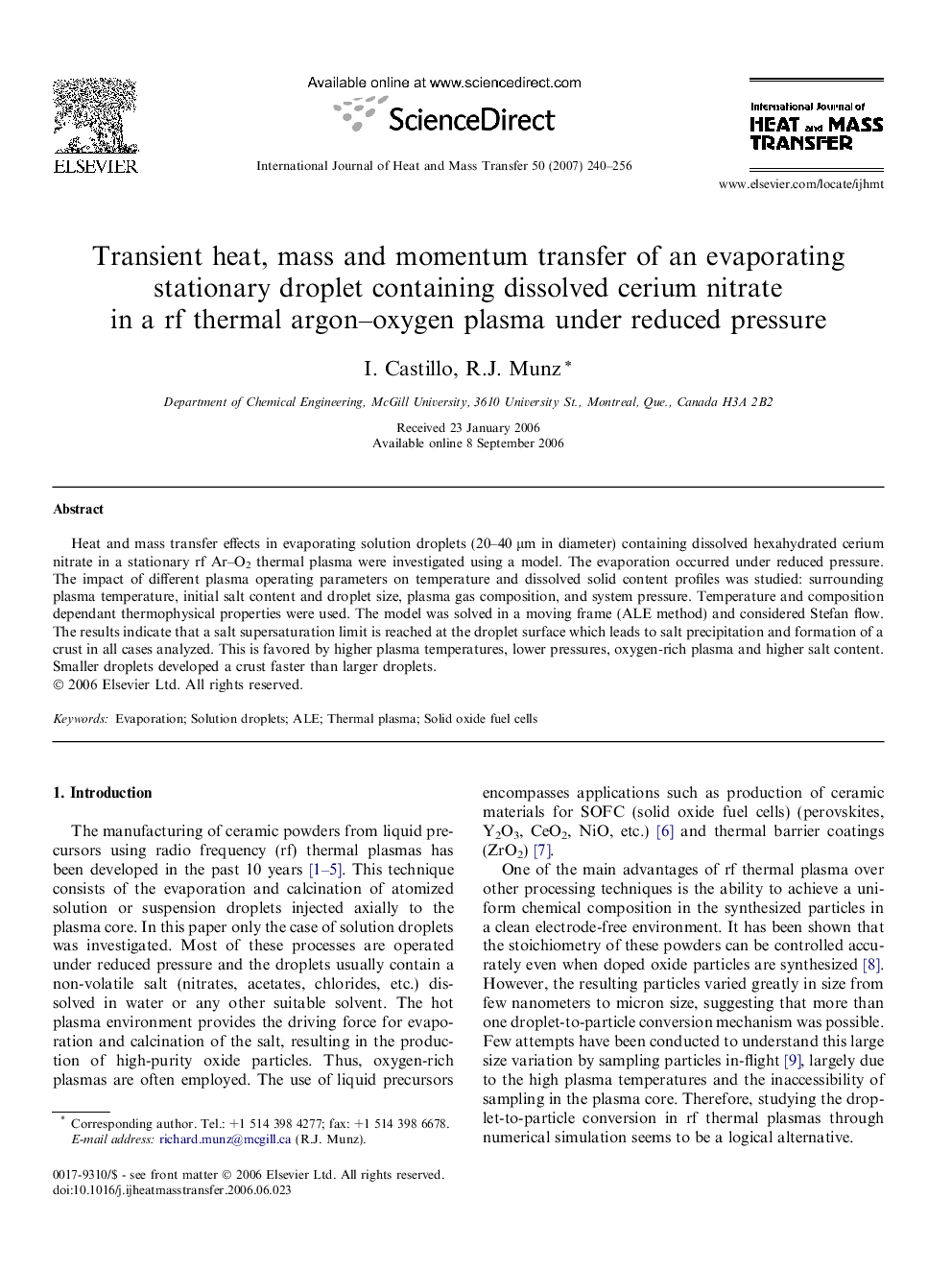| Article ID | Journal | Published Year | Pages | File Type |
|---|---|---|---|---|
| 663297 | International Journal of Heat and Mass Transfer | 2007 | 17 Pages |
Heat and mass transfer effects in evaporating solution droplets (20–40 μm in diameter) containing dissolved hexahydrated cerium nitrate in a stationary rf Ar–O2 thermal plasma were investigated using a model. The evaporation occurred under reduced pressure. The impact of different plasma operating parameters on temperature and dissolved solid content profiles was studied: surrounding plasma temperature, initial salt content and droplet size, plasma gas composition, and system pressure. Temperature and composition dependant thermophysical properties were used. The model was solved in a moving frame (ALE method) and considered Stefan flow. The results indicate that a salt supersaturation limit is reached at the droplet surface which leads to salt precipitation and formation of a crust in all cases analyzed. This is favored by higher plasma temperatures, lower pressures, oxygen-rich plasma and higher salt content. Smaller droplets developed a crust faster than larger droplets.
